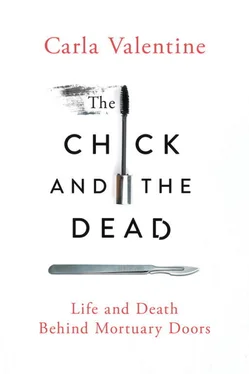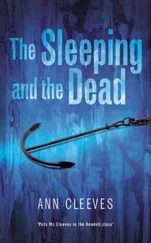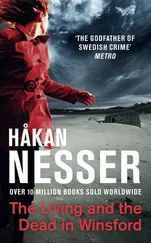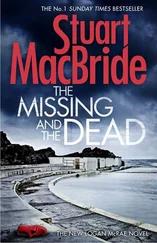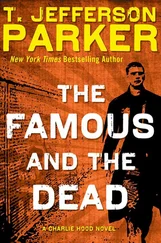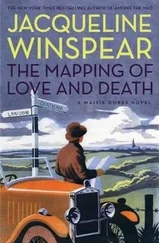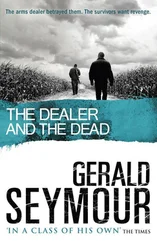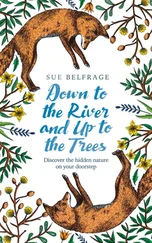‘Ah, I see,’ they both said, with a smile.
I wasn’t sure they did see. ‘Look, if “technician” was good enough for R. A. Burnett, MBChB, FRCP, FRIPH, FRCPath, who literally wrote the book on the subject, then it’s good enough for me!’
I laughed, realising that if a person has never seen The Red Book , which is basically the APT’s training bible, then that joke isn’t funny.
‘Just call me a mortician,’ I relented, embarrassed, ‘for ease.’
I use the word mortician all the time though I know some other APTs don’t really like it. [4] I’m not sure why there’s such haughtiness about it. I meet people all the time who say ‘I’m a nurse’ not an ‘SRN’ (state registered nurse) or ‘I’m a doctor’ not an ‘SpR’ (specialist registrar). It’s just more conversational and casual to use terms people are familiar with. There’s nothing wrong with that.
I use it for several reasons. Firstly, nobody knows what an APT is. If I’m asked what I do and I say I’m an APT it just stops the conversation dead (pun not intended) for all the wrong reasons, or alternatively far too many questions follow: questions about what it stands for, how you spell it, am I a doctor etc. Secondly, the official phrase ‘anatomical pathology technologist’ is incredibly clunky◦– my tongue wraps around it like a thrashing eel. I think ‘mortuary technician’ is neater and self-explanatory, but I like to imagine the words ‘mortuary’ and ‘technician’ as two separate, cumbersome handfuls of snow which I can squeeze into one compact snowball of a word: ‘mort-ician’. Everyone knows what ‘mortician’ means. Then, like a snowball, it can be metaphorically thrown into the face of the enquiring person in a cold, descriptive burst which surprises them and makes them shake their head in disbelief.
But finally, I’m not only an APT: my career with the dead has spanned embalming, medical dissection and prosection, excavation and examination of bones as well as conserving historical human remains. As an individual I am a mortician.
‘Really? A mortician ? You don’t look like one!’ is the usual response. And I quite like that; I like being something totally different from what my exterior implies. But more than that, I’ve worked with the dead all my adult life and it is important to me to get that passion across. It’s become part of my identity. As the poet-undertaker Thomas Lynch described it, I am one of the ‘people whose being had begun to meld with their doing’. Me the person and Me the caretaker of the dead are two entities that have become indivisible.
I had already met the older of the two actors, Brian Cox, as he had previously been to the Pathology Museum where I work to record part of a documentary he was presenting. That particular segment was all about the dangers of alcohol on the liver and I’d had to bring a variety of livers to the table and present them for the crew’s approval. It was a bit like being a London market trader, setting down my wares and trying to convince them of their quality so I didn’t have to keep hauling livers all over the place from three different floors:
‘Nah, this is a lahvly liver, mate, exactly wotcha lookin’ for.’
‘Nah, sir, ya don’t want that one up there◦– I’ll do y’a deal on this one!’
He and Emile, who is playing the part of Brian’s son, both seem jovial enough at first, and the crew keep reminding me I’m a necessary part of the team: ‘Brian and Emile are so pleased you’re here to help them out.’ That is until week four of the shoot when they are getting tired and acting like the typical divas you imagine from the tabloids. Emile is growing more and more irascible and Brian seems to have lost interest and comes back on set after the lunchtime break looking anything but enthusiastic. The crew asks me to work some more days but, apart from the fact I really don’t want to be anywhere for twelve hours a day, let alone a freezing-cold warehouse studio, I just can’t spare the time away from my day job. On my final day I ask the art director if the actors’ behaviour is typical of a film because I don’t really have a clue and she says, ‘No, it’s just been a very “trying” project.’
I witness this first hand when, on my last day, I offer some advice to Emile and he shouts at me, ‘Nobody will know and nobody cares .’
‘Oh, well, I’m glad I’ve been spending twelve hours a day here to advise you on correct procedure, then,’ I think as I quietly walk away.
I wonder again whether this is reflective of the attitude of others: that somehow what we do in mortuaries is considered so weird or unimportant that nobody cares anyway and no one wants to know. There’s a definite divide between people who enjoy this type of work or want to know all about it, and people who think it’s totally bizarre. I can’t count the number of times someone in the crew whispered to me, ‘A film set◦– it’s exciting, isn’t it?’ and I had to whisper back, ‘No, it’s a bit boring. To me this would be more exciting if it were a real mortuary and a real autopsy.’ I chose to work with the dead because I find it interesting and incredibly rewarding. Hanging around on productions, for me at least, is not really how I’d prefer to spend every day.
* * *
Conversely, in the post-mortem room, the action never stops. Even though the pathologist has left there is still work to be done. Jason has taken on the cleaning so that I can focus on reconstructing the anorexic dentist. I sew all his incisions together, I wash him, I comb his unkempt hair, I place dressings on his bedsores and I even trim his overgrown fingernails. He actually looks better now than when he first came in. He’s perfectly viewable for any family or friends… but no one has come forward to ask to view him. It’s not a wasted effort, though; I did this for him, not necessarily for anyone else. That’s why it’s rewarding◦– he looks at peace now. I gently graze his forehead with my hand to make sure his eyes are properly closed, then zip up the body bag and place him back in his section of the fridge.
* * *
Many people do think working with the dead is interesting and want to know more so I give a lot of interviews. The problem with giving interviews is that even with the best intentions, writers can alter what you’ve said for dramatic effect, or not do their research correctly. It’s not because they’re being malicious◦– death inhabits a very confusing and sensitive world.
Take the dead body, for example. I can euphemistically call the deceased someone’s ‘loved one’ or a ‘decedent’. In certain contexts, for example when we study taphonomy (the science of decaying organisms) or discuss organ and body donation and dissection, we refer to the dead as ‘cadavers’. The word ‘patient’ just wouldn’t make sense. Yet when I worked in a hospital mortuary they were all called ‘patients’ because they came to us from the hospital and the autopsy is the last part of their medical journey, so they’re still technically under patient care. However, those who work in Coronial mortuaries, like I did at first, don’t use the term ‘patient’ and are more likely to say ‘case’. They all mean the same thing but they have their own individual nuances which don’t quite make sense in all contexts, and a journalist, for example, may not understand that. That is why I try my best to give thorough interviews when anyone is kind enough to ask me to, but it can’t be helped if my use of the word ‘patient’ gets changed to ‘corpse’ in the final edit because of the perceived confusion it may cause for the reader.
Читать дальше
